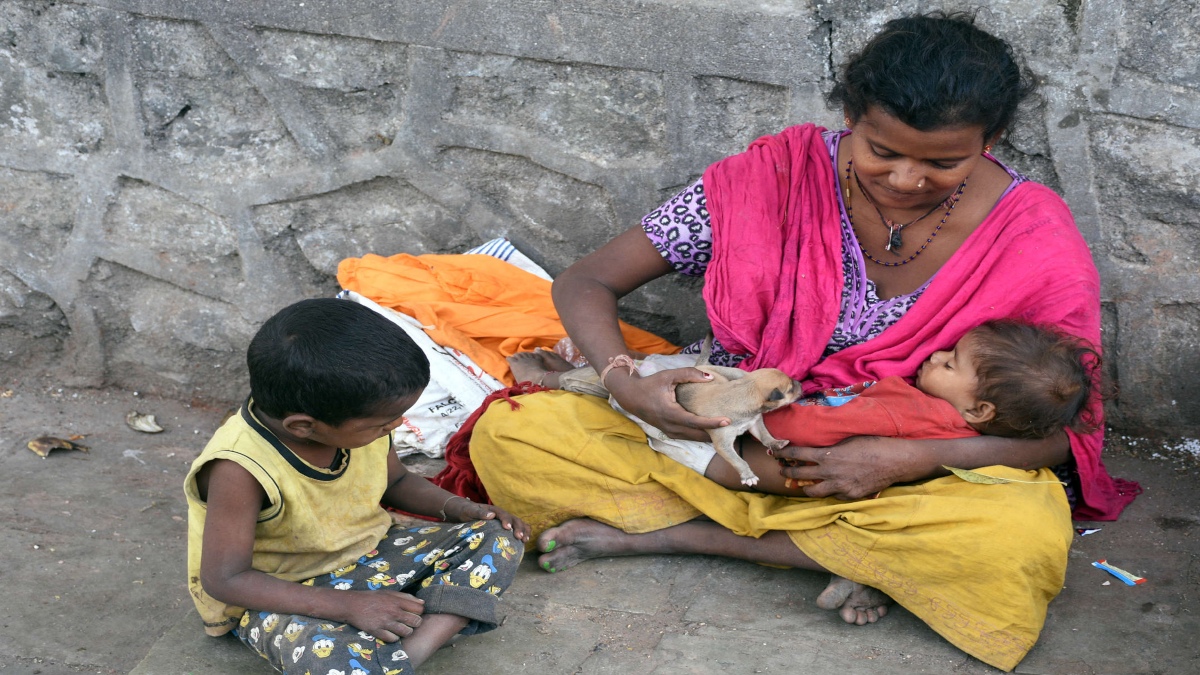
C ovid-19 has transformed into a silent pandemic of hunger and starvation as a result of millions of people pushed into the vicious cycles of economic stagnation, loss of livelihood and worsening food insecurity. The World Bank has estimated that 71 million people will be pushed into extreme poverty across the globe as a result of the pandemic. As per the State of Working India 2021 report by the Azim Premji University, about 100 million lost jobs during the nationwide April-May 2020 lockdown. Most were back at work by June 2020, but even by the end of 2020, about 15 million workers remained out of work. Incomes also remained depressed. As we saw the deadly second wave of Covid-19 ravaging our country and leaving families devastated, the oxygen crisis overwhelmed the entire system while the crisis of hunger and starvation kept becoming grave each day. The CMIE Unemployment Data reveals a grim picture of unemployment spiralling to 12% by the end of May 2021 as compared to 8% in April 2021. Breaking this down further over 10 million or 1 crore people lost their jobs because of the second wave of coronavirus alone and 97% of households’ incomes have declined since the beginning of the pandemic last year. In a country like ours where a majority of the workforce is in the informal sector, people have not only been massively affected by the pandemic due to loss of jobs but also because they have no access to the benefits that come with formal employment and are out of the ambit of the social security schemes. The daily wagers, construction workers, street vendors, domestic helpers are the people who have been disproportionately affected by the pandemic and lockdowns and are living a life of uncertainty and disrupted incomes. Agriculture is the primary occupation in the villages but due to frequent lockdowns, there has been a disruption of the supply chains and access to the market for the sale of agricultural produce impacting the income of the rural households. World Food Programme estimates that an additional 130 million people could fall into the category of being food insecure over and above the 820 million who were so classified by the State of Food Insecurity in the World Report, 2019. In the 2020 Global Hunger Index, India ranks 94th out of the 107 countries. The pandemic has worsened this hunger crisis in India. With higher food inflation combined with reduced incomes, more and more households have to cut down on the quantity and quality of their food consumption. The impact is the worst on the low and middleincome household spend a large share of their incomes on food expenditure. The First Phase of the National Family Health Survey (2019-2020) has revealed alarming findings, with as many as 16 states showing an increase in underweight and severely wasted children under the age of 5. Ever since the advent of Covid-19, the pandemic has risked becoming nutrition crisis, due to overburdened healthcare systems, disrupted food patterns and income loss. And the disruption of programmes likes the Integrated Child Development Scheme (ICDS) and the mid-day meal programme. The current crisis highlights the importance of the existing welfare schemes like MGNREGA, PDS, and PMGKY etc which put cash and relief directly into the hands of the most vulnerable people and help them tide over the economic distress. There is an imperative need to improve food security by increasing local food production and strengthening food supply chains. The availability of high food stocks presents a bright opportunity to ensure the strongly advocated universal PDS which is the need of the hour. As the second wave has led to many young people who were the breadwinners of their families succumbing to the virus, it is of utmost importance that support is provided to these families with adequate cash and food support and building employment opportunities to prevent them from slipping further below the poverty line. Like the first wave, it has been the collective endeavour of several citizen initiatives and NGOs to complement the efforts of the administration to mitigate the hardships and provide immediate relief to the most marginalised communities who have been the worst affected by the pandemic. At Samarpann, we are focusing all our resources on the rural areas keeping in view this alarming crisis. Until now we have distributed 2.6 million meals across India since the advent of the Pandemic. When our team visited the villages in Rajasthan, Uttarakhand, Kashmir, and Mizoram we realised that nothing had changed for these families in the second wave as compared to the second wave. The second wave has worsened the conditions for most of these households as there has been a loss of livelihoods and depletion of savings due to medical expenses. The people have either not been reinstated into their jobs after the first lockdown or have suffered major pay cuts leading to reduced incomes. Though we provide immediate relief in the form of ration and sanitation kits, it is important to start rebuilding the lives of these families, especially those who have lost their earning members. Hence, we are purchasing the relief material from the women Self Help Groups (SHGs) so that it increases their income sources and providie the material in the community itself. We believe that the solution to the hunger crisis should follow a twofold approach of addressing food insecurity as well as providing livelihood opportunities to the people whose voices have largely been left unheard in this second wave of Covid-19. Each ration kit includes wheat flour, rice, two types of pulses, sugar, cooking oil, spices, and salt which is sufficient to take care of a family’s need for 15 to 20 days. There is also a sanitation kit that has soaps, sanitisers, and a packet of masks. Some of the villages which we are targeting are Rathkankara, Borabas, Kolipura, Girdharpura, and Bhairopura in the Kota district in Rajasthan which is mostly inhabited by the indigenous communities of tribal. In Kashmir, with our partner organisation, we are targeting villages in Anantnag, Baramulla, Pulwama, Bandipora, and Kulgam while in Uttarakhand the target areas are the women in the Khatima block of Udham Singh Nagar, who are single earning members coming from very poor families. Mizoram hosts its own problems, being tribal predominated and situated in the arduous terrains. Covid-19 pandemic has presented itself as a challenge and an opportunity to address our long-standing problems of food security and nutrition and the current need is to come up with sustainable solutions which help us tide not only over the current crisis but also lift millions of people out of the vicious cycle of hunger and poverty. ‘One Nation, One Card’ across the country is a long term solution aimed at bringing a large number of excluded households into the ambit of social security. Similarly, diversification of the food basket under PDS and ICDS would go a long way in addressing malnutrition and reducing the disease burden in the country. The task at hand is a humongous one that needs to be dealt with at multiple levels by various stakeholders coming together to minimise the adversities and develop long term strategies for addressing hunger and malnutrition. Dr Ruma Bhargava, Lead Healthcare, World Economic Forum and Founder, Samarpann & Dr Megha Bhargava, Deputy Commissioner Income Tax, Govt of India.
The views expressed are personal















